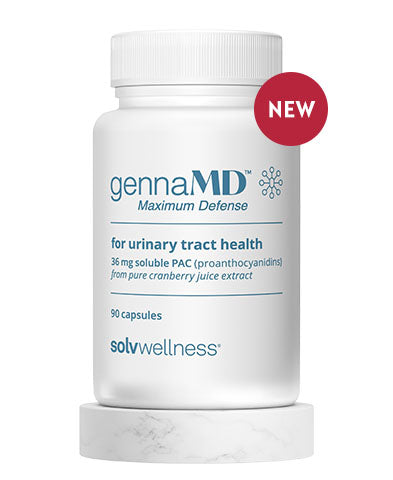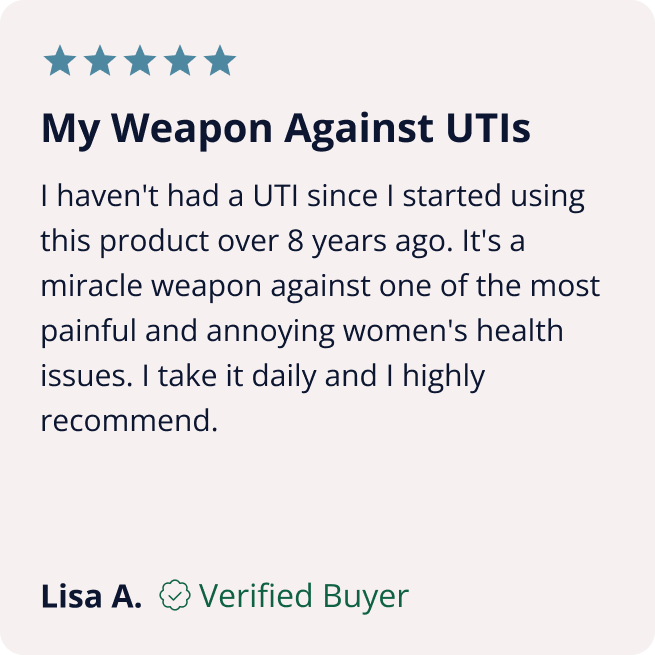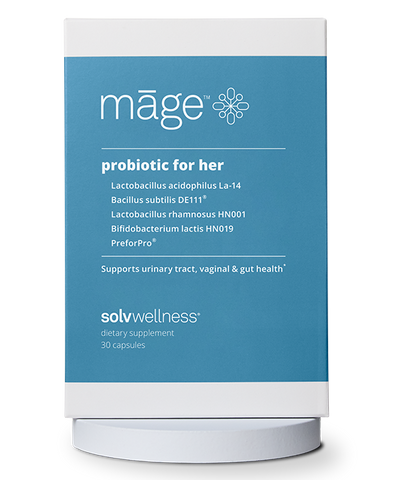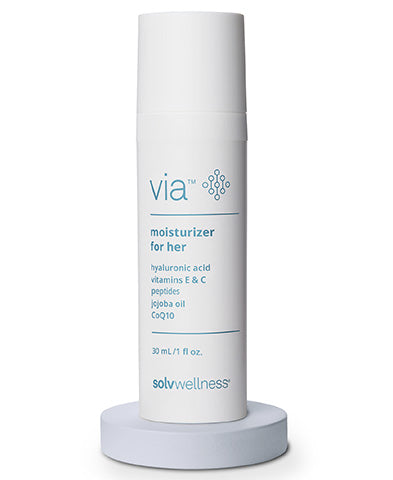You’ve got a sudden urge to go to the bathroom. While this doesn’t seem out of the ordinary at first, the urge is happening every hour. As soon as you go, you’ve got to go again. You know this isn’t normal. And when you do go, it’s painful. You feel a burning sensation and your pelvic region or lower stomach hurts.
You’ve got the classic symptoms of a urinary tract infection, also known as UTI. These infections can be uncomfortable and inconvenient. If left untreated, the infection can even cause kidney damage and lead to sepsis. While that sounds scary, fortunately there are ways to prevent UTIs.
UTIs happen when E. coli bacteria enter your urinary tract. Sex, kidney stones, using certain contraceptives, and a weakened immune system can make you more vulnerable to UTIs. So can the drop in estrogen that happens during menopause or post-partum.
For women with hypoestrogenism (low estrogen), vaginal estrogen is one option that helps prevent recurrent UTIs by replenishing estrogen levels. Learn how this option supports vaginal and urinary tract health and what factors to discuss with your healthcare provider before considering it as a treatment option.
You may think of estrogen as just one of the sex hormones your ovaries produce. However, estrogen plays a huge role throughout the entire female body. It helps maintain vaginal tissues, urethra muscles, bone health, cardiovascular function, and even your brain.
When estrogen levels decline, vaginal tissues become thinner and drier, reducing their natural defense against harmful bacteria. This hormonal shift also disrupts the vaginal microbiome, reducing beneficial Lactobacillus bacteria that help maintain an acidic environment to prevent bacterial overgrowth. As a result, the urinary tract becomes more susceptible to infections like UTIs. Additionally, weakened pelvic and urethral muscles can make it harder to fully empty the bladder, allowing bacteria to linger and increase the risk of infection. Restoring your estrogen levels mitigates the risks that make you more vulnerable to UTIs.
Vaginal estrogen is available in several forms, including creams you can apply yourself, as well as rings, tablets, and inserts. Tablets, inserts, and creams are usually used, at first, every day. The frequency drops to a few times a week after 2-4 weeks. A ring usually stays put for three months before you have to switch it out with a new one.
Creams can be less intimidating and come with fewer complications. However, they do require the use of your finger or an applicator to insert the estrogen into your vagina.
Creams and tablets mean remembering to use the medication more frequently. A ring doesn’t come with as much oversight, but some women find it uncomfortable or difficult to wear. Similar to a menstrual disc or cup, there’s some trial and error that comes with placement.
Vaginal estrogen doesn’t just prevent UTIs in both perimenopausal and menopausal women. Clinical studies have shown it also prevents UTIs in females with hypoestrogenism, which can occur following childbirth, cancer treatments, and hysterectomies.
A 2023 study in the American Journal of Obstetrics & Gynecology found vaginal estrogen reduced recurrent UTI rates in postmenopausal women by over 50%. An earlier study with menopausal women also concluded vaginal estrogen helped prevent recurrent UTIs. Participants who used vaginal estrogen had fewer UTIs within six months versus those who used a placebo.
Using vaginal estrogen long-term can alleviate itching, dryness, and painful sex as well. While this treatment helps prevent urinary tract infections and symptoms like frequent urination, thinning vaginal tissue can still increase urinary frequency and urgency, even if you don’t have a UTI.
Of course, vaginal estrogen isn’t the only way to prevent UTIs. Incorporating clinically proven UTI supplements into your daily routine, drinking more fluids, and adopting healthy dietary habits can help you get ahead of UTIs. While some of these prevention methods can be effective, they don’t restore normal estrogen levels. If hormonal changes are behind your recurrent UTIs, leading menopause specialists often prescribe vaginal estrogen as a preferred treatment option. However, a comprehensive approach for broader defense and added protection—such as using vaginal estrogen in combination with clinically proven cranberry PAC supplements—is often recommended.
Experiencing one UTI is more than enough. Whether your symptoms are mild or severe, it’s something you don’t want to go through again. Yet, a quarter of women will have more than one UTI in their lifetime.
Recurring UTIs are defined as having two infections in six months or three within 12 months. Besides hormonal changes, the female anatomy increases the risk of recurrent infections.
Women have shorter urethras and they’re located closer to the end of their digestive tracts. Vaginal dryness due to lower estrogen levels only heightens the risk. Using vaginal estrogen has been shown to restore proper pH balance and healthy bacteria, reducing the risk of recurrent UTIs.
Vaginal estrogen has been extensively studied and prescribed for decades. There are no known side effects, provided you follow the dosing and directions of your healthcare professional. When using vaginal estrogen for the first time, some women may have temporary irritation due to the dryness of the vaginal and vulva tissue—sort of like when you apply aloe vera to sunburned skin. But it is important to continue use—the minor irritation will subside.
Vaginal estrogen helps prevent UTIs in women with low estrogen by restoring healthy bacteria and combating vaginal atrophy by replenishing moisture. Long-term use can decrease some of the symptoms that mimic UTIs and reduce repeat infections.
Like any drug or hormone replacement therapy, it’s important to schedule a consultation with a healthcare professional to determine whether vaginal estrogen is right for you. They can review your symptoms and health history so you receive the personalized advice you need.
Vaginal estrogen prevents UTIs by restoring healthy pH and moisture levels in the vagina. It makes the environment less inviting to the harmful bacteria that cause UTIs.
Vaginal estrogen is a well-studied treatment with no known side effects when used as directed. Some women may experience temporary irritation at first, but this subsides with continued use.







